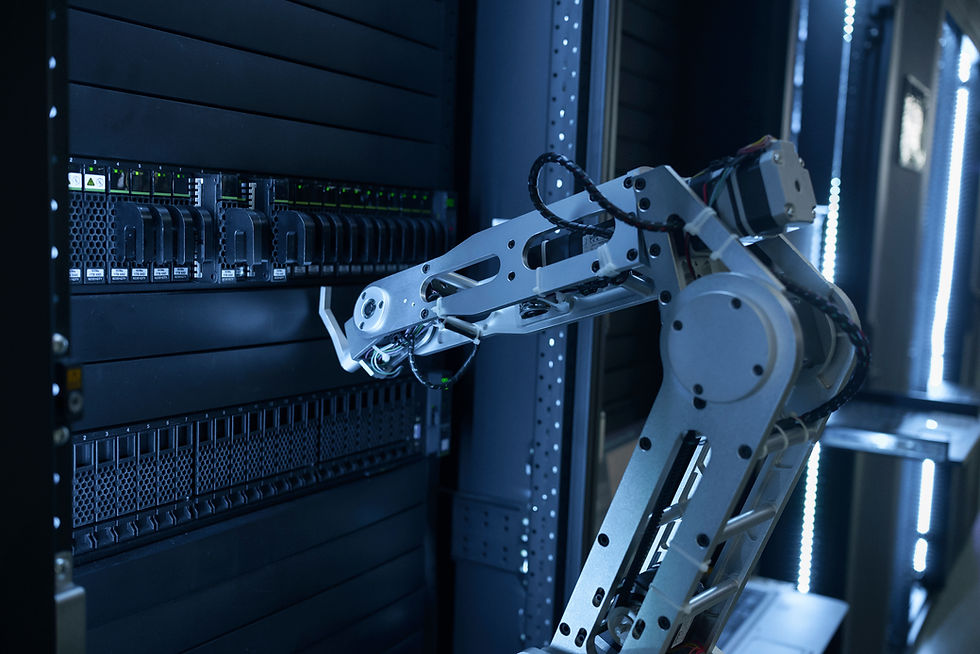The Turing Trap: The Promise & Peril of Human-Like Artificial Intelligence
- occamobservatory
- 8 nov 2023
- Tempo di lettura: 3 min
By Vittoria Acampora
In 1950, Alan Turing introduced a test to evaluate machine intelligence based on human-like responses. While many have strived for human-like AI (HLAI) with the potential benefits of increased productivity, side-effects such as the replacement of human labor by machines weaken workers' bargaining power, and augmentation-focused AI empowers individuals and creates new capabilities, products, and services, often surpassing HLAI in value. Despite the advantages of both approaches, current incentives in technology, business, and policy tend to prioritize automation over augmentation.

Advancements in HLAI are driving the development of robots with increasingly human-like qualities: this AI is able to match humans in various tasks, from image recognition to autonomous vehicles and medical diagnosis, with significant economic implications. This technology is versatile and has the potential to address global challenges, leading to substantial wealth creation. HLAI is not just about reducing human labor, but enhancing adaptability in handling unforeseen problems, making it a valuable asset and deepening our understanding of the human mind.
The impact of AI on distribution depends on whether it augments or automates human labor. Augmentation preserves human value and influence by complementing human abilities with AI; on the other hand, automation can boost productivity but may lead to job displacement, in this case, AI replicates and automates tasks, allowing entrepreneurs with advanced machines to replace human workers. In a fully automated economy where benefits could be distributed broadly, the power could become controlled by technology owners.
The pursuit of highly human-like artificial intelligence (HLAI) holds both promise and peril; it offers unprecedented benefits but also risks leading to human labor automation, creating the "Turing Trap" where the powerless can't improve their circumstances. To address this challenge, we must harness AI's benefits, including HLAI, while avoiding the Turing Trap: this involves understanding how technology impacts productivity and inequality, recognizing the appeal of the trap to different stakeholders, and working toward a more equitable outcome.
Nils Nilsson, an AI pioneer, distinguished between "strong AI" (human-level AI) and "weak AI" (machines assisting humans). While the first one tends to automate tasks, potentially replacing human labor, the latter aims to enhance human capabilities: both automation and augmentation can increase labor productivity, but their distribution of gains varies. When technology automates labor, benefits often go to technology owners, reducing worker value, while augmentation directs more benefits to workers.
While certain technologies create new job categories, modern AI and automation may have different effects: recent evidence shows a decrease in the labor share of the economy, contributing to wealth concentration, particularly benefiting those with unique skills. Within this context, unregulated markets tend to favor automation over augmentation, and AI's effects go beyond the economy, impacting society and political power. The digitization of knowledge and AI advances can accelerate the trend toward power concentration.
The "Turing Trap" presents risks because technologists, business leaders, and policymakers tend to prioritize automation over other forms of technological advancement. While the appeal of creating human-like systems is evident, the paradox is that achieving superhuman performance can be easier and more valuable than replicating human-level abilities. Business leaders prefer automation because it's the easiest path to innovation, involving the replacement of human tasks with machinery, reducing complexity, and cutting labor costs. However, this approach can limit ambition and overlook the potential of combining human abilities with technology, which can achieve far more than humans alone.
The future impact of AI on humanity is not predetermined: OCCAM believes that balancing the development of HLAI with preserving human jobs and dignity is crucial. Prioritizing augmentation over automation can help create a more equitable and inclusive future, avoiding the risk of income inequality. It is fundamental to shift from the Turing Test to practical benchmarks that guide AI development beyond human capabilities and to build strong political and economic institutions capable of handling AI's influence can counter the backlash and create a prosperous, inclusive society for all, avoiding the Turing Trap and benefiting the majority, not just a privileged few.
Sources:
Erik Brynjolfsson; The Turing Trap: The Promise & Peril of Human-Like Artificial Intelligence. Daedalus 2022; 151 (2): 272–287. doi: https://doi.org/10.1162/daed_a_01915




Comentarios